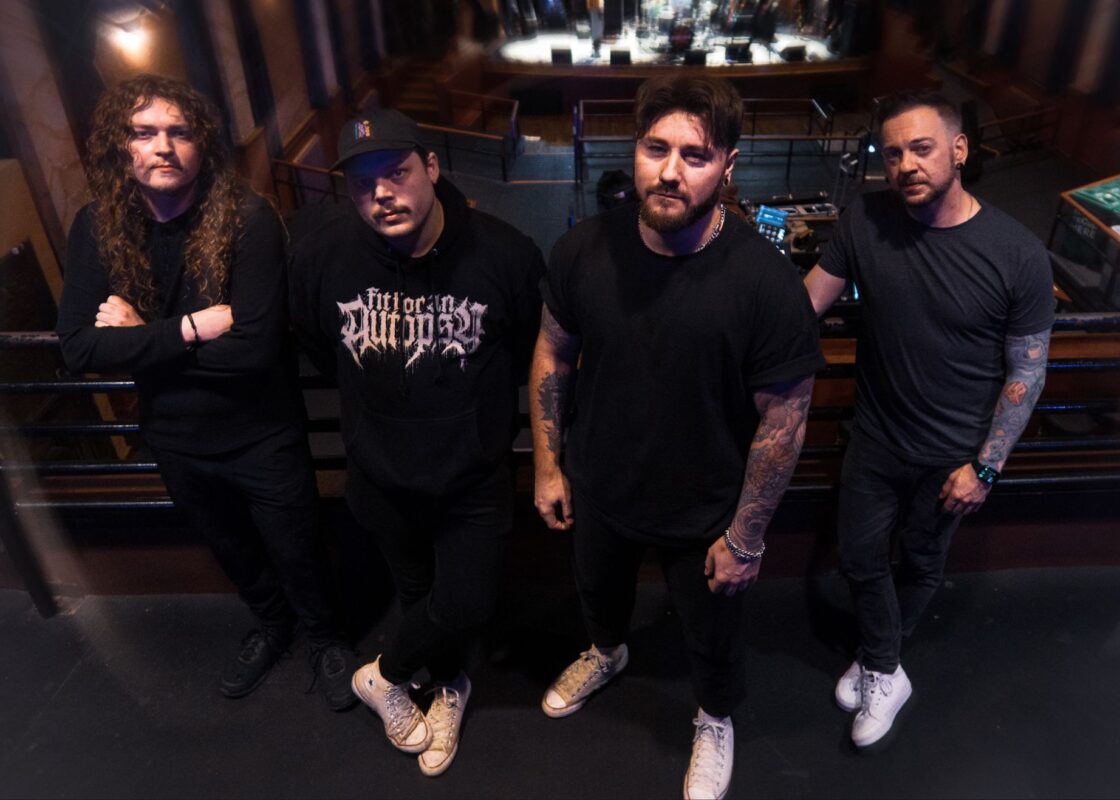The enigmatic roots of Scotland have given life to some of the most poetic, mythic, and enchanting music in history. What started as serene pentatonic scales and pedal tones on bagpipes has now evolved into Scottish folk metal, a genre that manages to capture the potent power of its heritage and clothe it in modern metal elements.
Andy Marshall, the mastermind behind Saor, is a Scotsman who has brilliantly melded blackened metal to Scottish folk music, giving a nod to the past while also creating a truly distinct present. The self-proclaimed “Caledonian metal” artist will be releasing his 5th album, Origins, on June 24. Nine years after his debut record, Roots, was released in 2013, the evolution of Saor’s sound has aged like a fine wine, with subtle notes and overtones of anticipation for what is to come on this new record.
We caught up with Andy to discuss the new album, a brief history of the band, and what drives his creative process.
First off, it’s a pleasure to have you interview with us. As a massive fan of your work, both in Saor and Fuath, I cannot wait to hear your upcoming album, Origins, to be released on June 24 via Season of Mist! This will be your 5th album under the Saor project since you released Roots in 2013. How excited are you to share this new album with fans?
I’ve been listening to it for the past two years, so I’d say I’m more relieved it’s coming out rather than excited. I’m looking forward to playing it live though!
It’s impossible for even the most passive of listeners to miss your Scottish roots when listening to any Saor record. Your own description of Saor is “Caledonian metal.” Can you explain that definition in your own words?
I got tired of trying to explain what style of music I play. “Caledonia” is the romantic and poetic name for Scotland, and I thought it described the music style perfectly.
According to Encyclopaedia Metallum, Saor “means ‘free’ and ‘unconstrained’ in Scottish Gaelic.” How did you come to pick that word as the band name?
It’s a bit more complicated than that. “Saor” in Irish Gaelic means “free” and “unconstrained.” It also means “free” in Scottish Gaelic, but it has other meanings too. I’m not a fluent Gaelic speaker. I chose the name because I liked the look and sound of it, but in hindsight, I probably would have called the project something else.
Does the love of music run in your family? There is something both deeply spiritual and archaic to the music of Saor. Do you consider that an inherited trait or something distinct to you in your family’s story?
Not really. No one played instruments in my family, but my dad used to buy a lot of CDs and listen to a lot of music when I was younger. I got into rock and metal at high school and decided I wanted a guitar when I was probably about 12 or 13. I’m completely self-taught.
“I don’t class Saor as black metal. There’s obviously influences in the music, but I always see Saor as relating more to folk or pagan metal.”
Tell us about Origins. What inspired this record? Are there any particular themes behind the lyrics, or would you consider this a medley of individual stories?
The Picts are the main theme behind the album. They were a group of peoples who lived in North and Eastern Scotland in late antiquity. Each song has a different story behind it. For example: “Beyond the Wall” is about the Antonine Wall which was a fortification built by the Romans across the central belt of Scotland to keep the Picts at bay. The artwork for Origins is inspired by Pictish standing stones and carvings.
In what ways do you feel you have evolved as both an artist and as a human being since releasing Forgotten Paths in 2019?
A lot has happened since then. I have a lot more responsibilities in my life and less free time to focus on music. I think this makes it more special when I do have the time to sit down and play guitar and write songs.
Many readers may not know this fun fact: you actually are the mind behind Saor and Fuath, a fantastic project I consider even more enriched in the black metal sub-genre than even Saor. They are both very different stylistically, of course. In what ways would you contrast the two projects?
I don’t class Saor as black metal. There’s obviously influences in the music, but I always see Saor as relating more to folk or pagan metal. Fuath on the other hand is heavily influenced by the 90s second wave of black metal. I write ideas for Saor throughout the year, but I usually wait until winter before I start coming up with stuff for Fuath. I take inspiration from the cold weather and the long, dark days.
What bands, artists, and composers inspire you, particularly when it comes to any inspiration behind the creative aspects of Saor?
Too many to list! I’d say that Windir was one of my biggest inspirations for starting Saor. They were the first band I heard that mixed atmospheric black metal and folk elements without sounding cheesy or over the top.
You have been sharing a couple of upcoming show dates on your social media platforms. Do you anticipate planning a full-length tour to be scheduled in the coming year?
We are supporting Gaahls Wyrd on their European tour in October. I think we’ll try and organize a few small tours next year, but that remains to be seen.
If you like what you hear, you can follow Saor on Instagram, Facebook, and Bandcamp.

















